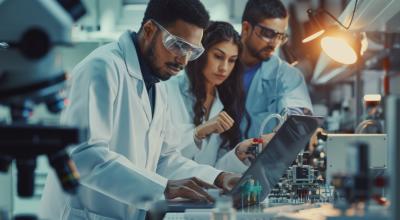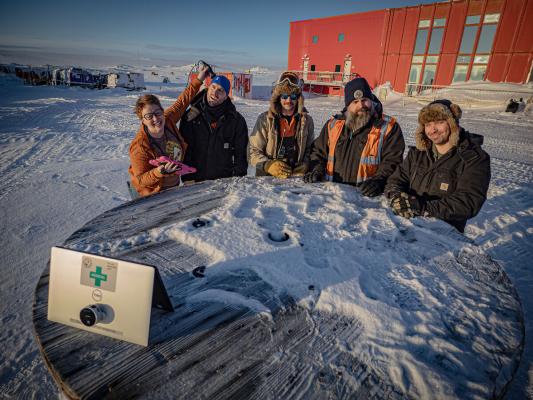With an average temperature of −12 °C, Antarctica is one of the harshest climates for humans on Earth, but probably the best location to study their health in space.
Findings from two Australian Antarctic Program studies are informing astronaut health and future space missions to the Moon and Mars.
Expeditioners and doctors at Australia’s Antarctic and sub-Antarctic stations are collecting data from two projects involving ultrasound and body scanning technology that would shed light on how to monitor, diagnose and optimise astronaut health during long-duration.
The projects are part of a collaboration with the US-based Translational Research Institute for Space Health (TRISH), whose human health experiments were recently aboard SpaceX's historic Polaris Dawn Mission.
Two of the experiments that went into space with the Polaris Dawn crew are also being tested in Antartica — helping address behavioural challenges associated with extreme isolation as well as the need to develop advanced autonomous medical care needed for long-duration space travel.
“Antarctic expeditioners and astronauts are both isolated, confined populations in extreme environments, doing hazardous work, dependent on technology for survival, and with limited scope for evacuation,” shares the Chief Medical Officer of the Australian Antarctic Division (AAD), Dr Jeff Ayton.
"This makes the Australia’s Antarctic Program an excellent analogue for understanding the risks to humans in space, and for testing and developing technologies and methodologies to reduce these risks," Dr. Ayton adds.
Tasmania-based AAD leads the Australian Antarctic Program. Their partnership undertakes scientific research in Antarctica, the sub-Antarctic and the Southern Ocean.
“There is tremendous value in transcending national borders in the interest of scientific discovery. Our international collaboration with the AAD will extract insights to benefit all future astronauts, as well as other explorers of extreme environments,” said Dr. Dorit Donoviel, associate professor in the Center for Space Medicine at Baylor and TRISH executive director in a previous statement.
The research projects
While the experiments are intended to better understand the effects of long-duration spaceflight on human health, they will also address challenges in other remote and regional environments here on Earth.
This research involves developing and trialling protocols for non-specialists to use portable ultrasound technology to produce “clinically useful” images.
Expeditioners follow the step-by-step protocols to scan the internal structure of the eyes, jugular vein, heart, kidneys and bladder. Some also practice on a medical-grade gel containing fake blood vessels.
The resulting scans are sent to US-based researchers for assessment.
Dr Ayton said that in space, the images could be reviewed by a practiced flight surgeon on the spacecraft or sent back to Earth for review by a specialist.
This research uses a 3D optical (3DO) body scanner to look at changes in body shape and composition (fat, muscle and potentially bone) and its impact on metabolic health.
Most people experience muscle loss and metabolic health changes when their ability to exercise is restricted, often after injury or illness.
In Antarctica, expeditioners can experience fluctuations in weight between winter and summer, and changes in muscle mass, depending on their exercise regime, which can affect their metabolic health.
The 3DO body scanner project will help doctors and researchers understand how to support astronauts and Antarctic expeditioners to be as healthy as they can during their endeavours.

Space is advancing medical science
Space-based research and technologies have resulted in important scientific discoveries and gains for the medical field.
Main image caption: Casey research station’s Antarctic Medical Practitioner Dr San Clarke demonstrates the use of the portable Butterfly ultrasound on a ‘volunteer’, while expeditioners involved in the research look on. Credit: Dr San Clarke.

